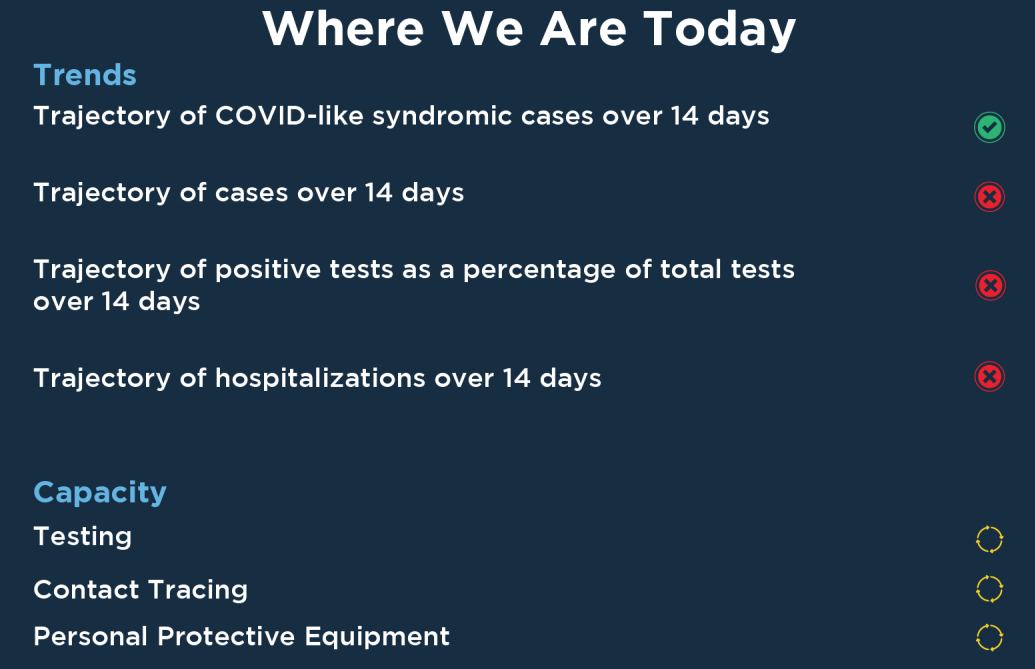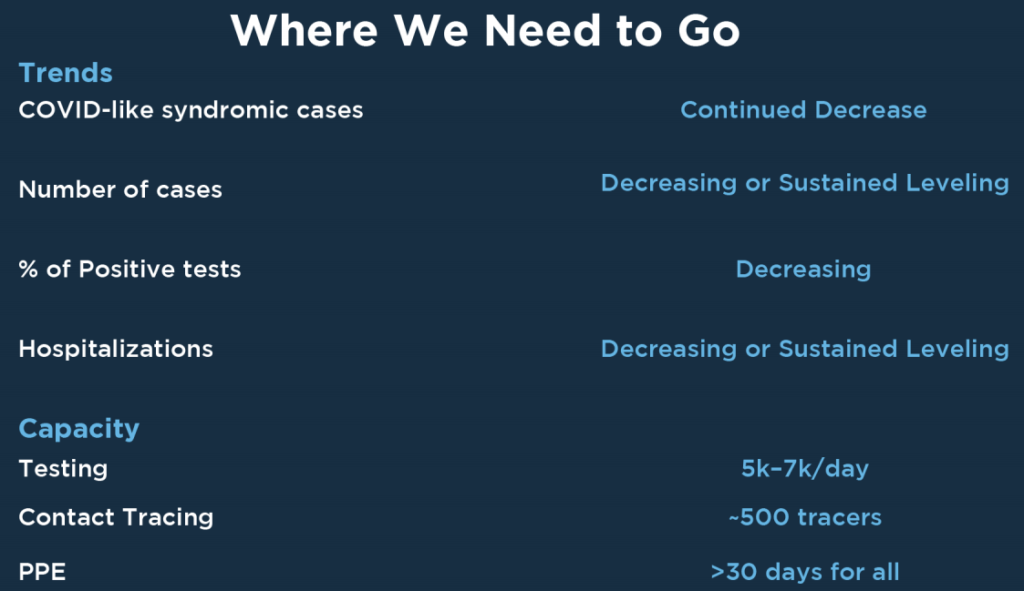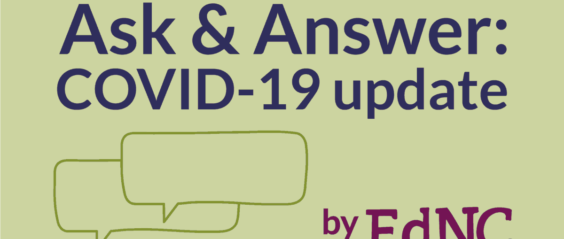Need to know: COVID-19
- As of 10:40 a.m. on Friday, April 24, there were 8,052 confirmed cases in 93 counties in North Carolina with 269 deaths.
- On Thursday, Gov. Roy Cooper extended the stay at home order until May 8 and shared a three-phased plan for lifting restrictions. More on that plan below.
- On Friday, Cooper announced K-12 school buildings will remain closed for the rest of the school year, and he released a proposed budget for $1.4 billion in CARES Act funding for North Carolina.
- North Carolina has been approved to provide additional food benefits for families whose children are eligible for free and reduced price lunch at school. From the press release: “Families will receive $250 in P-EBT benefits per child, provided in two installments, with the possibility of an additional benefit if North Carolina schools are closed beyond May 15.”
- Another 4.4 million people filed for unemployment nationwide last week. From March 15 to April 23, North Carolina saw 628,244 COVID-19 related unemployment insurance claims and has paid 288,565 claimants.
- Essential workers who are parents and have no other child care options can apply for financial assistance through NC DHHS.
- North Carolina is following CDC recommendations that people with mild symptoms should stay home and call their doctor to decide if they need a test. Check out this fact sheet from NC DHHS on what to do if you feel sick.
For more, view all of EdNC’s COVID-19 coverage here.
Policy challenge: Reopening, continued
Yesterday, Gov. Cooper and NC DHHS Sec. Mandy Cohen announced a more concrete plan for lifting restrictions and reopening the economy. Similar to Pres. Trump’s plan released last week, Cooper’s plan has three phases. Before we get to any phases, however, the governor and Cohen will be looking to see a downward trajectory in the following metrics:
- COVID-like syndromic cases over 14 days
- Lab-confirmed cases over 14 days
- Positive tests as a percentage of total tests over 14 days
- Hospitalizations over 14 days
And an increase in these metrics related to testing and tracing capabilities:
- Tests completed per day
- Ability to conduct widespread tracing
- Supply of personal protective equipment
The following two slides from the press conference look at where North Carolina stands on these metrics and where we need to be.


Once the data shows a downward trajectory in these key metrics, the state can enter Phase 1 of Cooper’s plan.
Phase 1 includes:
- Modified stay at home order to allow travel to any business that is allowed to be open, including clothing stores, sporting goods stores, bookshops, and others
- Social distancing and enhanced cleaning and hygiene protocols at open businesses
- Reopen parks
- No gatherings of more than 10 people
- Teleworking encouraged
- Strict restrictions on nursing homes and other congregant care settings
Phase 2: Two to three weeks after Phase 1
- Lift stay at home order
- Limited opening of restaurants, fitness centers, personal care services with potential need to reduce capacity
- Allow religious gatherings and at entertainment venues at reduced capacity
- Increase number of people allowed at gatherings
- Open playgrounds
- Maintain strict restrictions on nursing homes and other congregant care settings
Phase 3: Four to six weeks after Phase 2
- Lessen restrictions for vulnerable populations
- Increase capacity at restaurants, bars, entertainment venues, religious gatherings
- Increase number of people allowed at gatherings
- Maintain strict restrictions on nursing homes and other congregant care settings
During the press conference to announce this plan, Cooper and Cohen stressed that this path may not be linear. If there are outbreaks, North Carolina may need to implement more restrictions.
Dropping Knowledge
For the past two weeks, we’ve been working with Public Impact to compile a database of how North Carolina K-12 districts are responding to COVID-19 school closures, modeled after this national database compiled and updated by the Center on Reinventing Public Education (CRPE). Yesterday, we published version 1.0 of the database.
To compile the database, we looked at district websites and social media. We also sent a survey to all 115 superintendents. The current database looks at 11 indicators, each falling into one of three categories: curriculum, instruction, and equity/access. This project is the start of what we intend to be a more robust database. Over the next month we will fill in the gaps and complete the database with additional indicators.
Take a look and give us your feedback on this first iteration. What do you think of the indicators? What are we missing? Please send suggestions, corrections, or ideas on how to improve this resource to me at [email protected].
In the News
A lot has happened this week in the North Carolina education world. Check out these articles, and make sure to read the featured article from EdNC’s CEO Mebane Rash.
- What will it take to open schools in North Carolina this fall?
- After further thought, here’s what the State Board has to say about student grades
- Next round of CARES Act funding for community colleges and new guidance released from Department of Education
What we're reading
What will it take to open schools in North Carolina this fall?
EdNC's CEO Mebane Rash walks us through the scenarios being talked about for next school year and what considerations will need to be taken to reopen schools.... Read the rest-
Q&A: Food Supply Chain, Disrupted
-
Furloughing Employees During the COVID-19 Crisis
-
House lawmakers move forward COVID-19 response bills
-
Bringing an Analytics Mindset to the Pandemic
-
What the FCC Should Do Now to Support America and Our Learners
-
Cal State Fullerton Announces Plans For A Virtual Fall. Will Other Colleges Follow?


